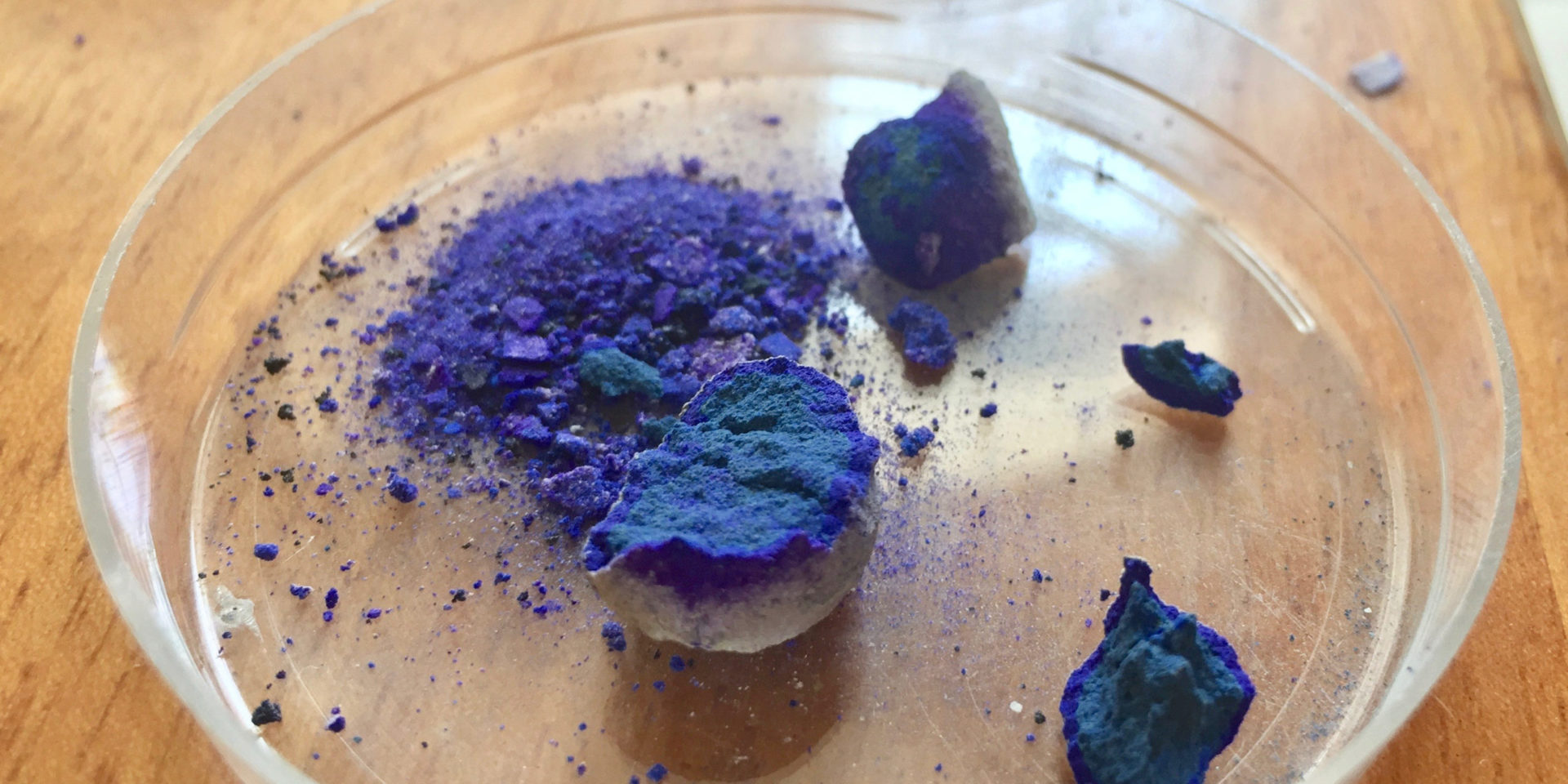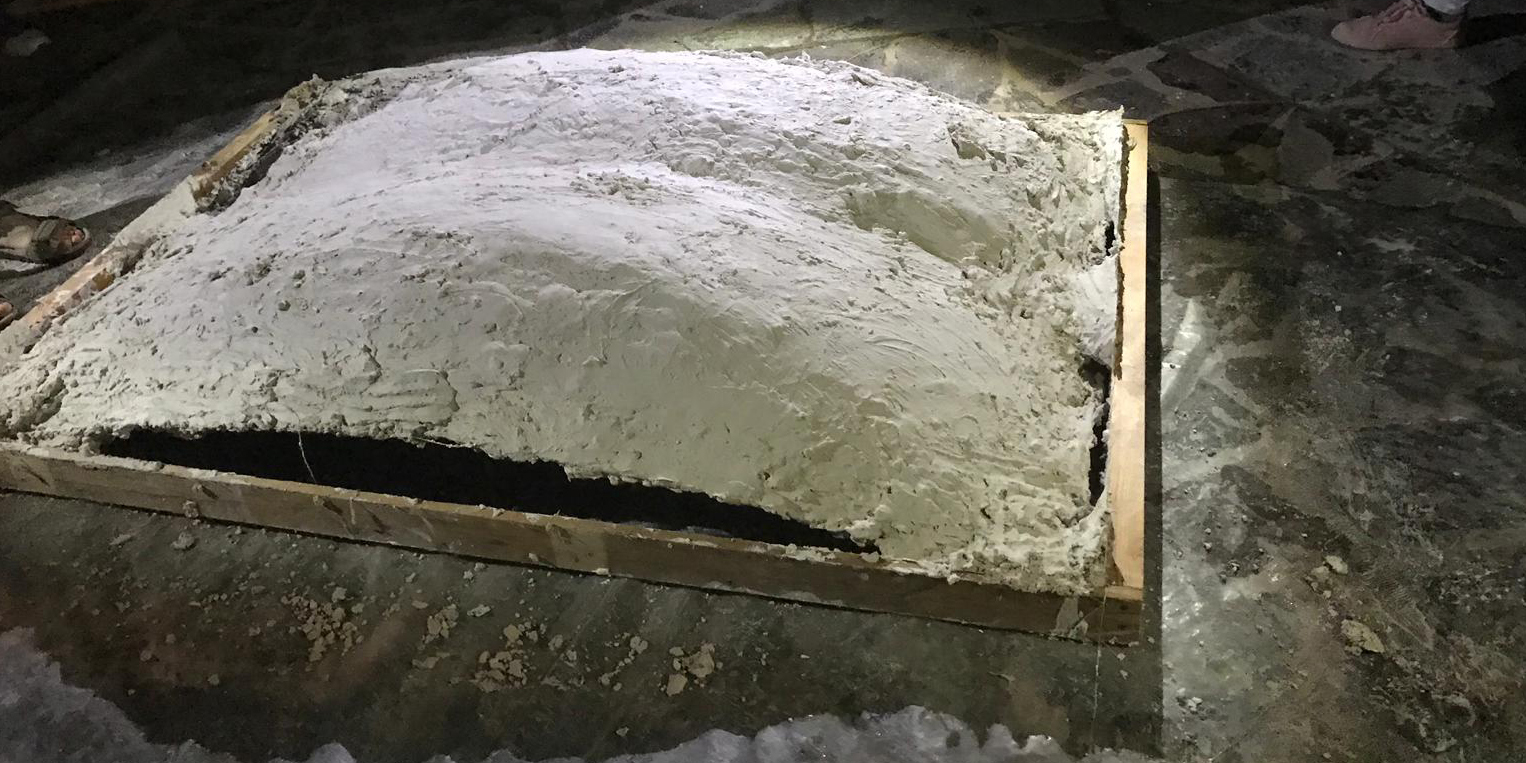ONE-MA3: Gypsum Adventures in Aramengo
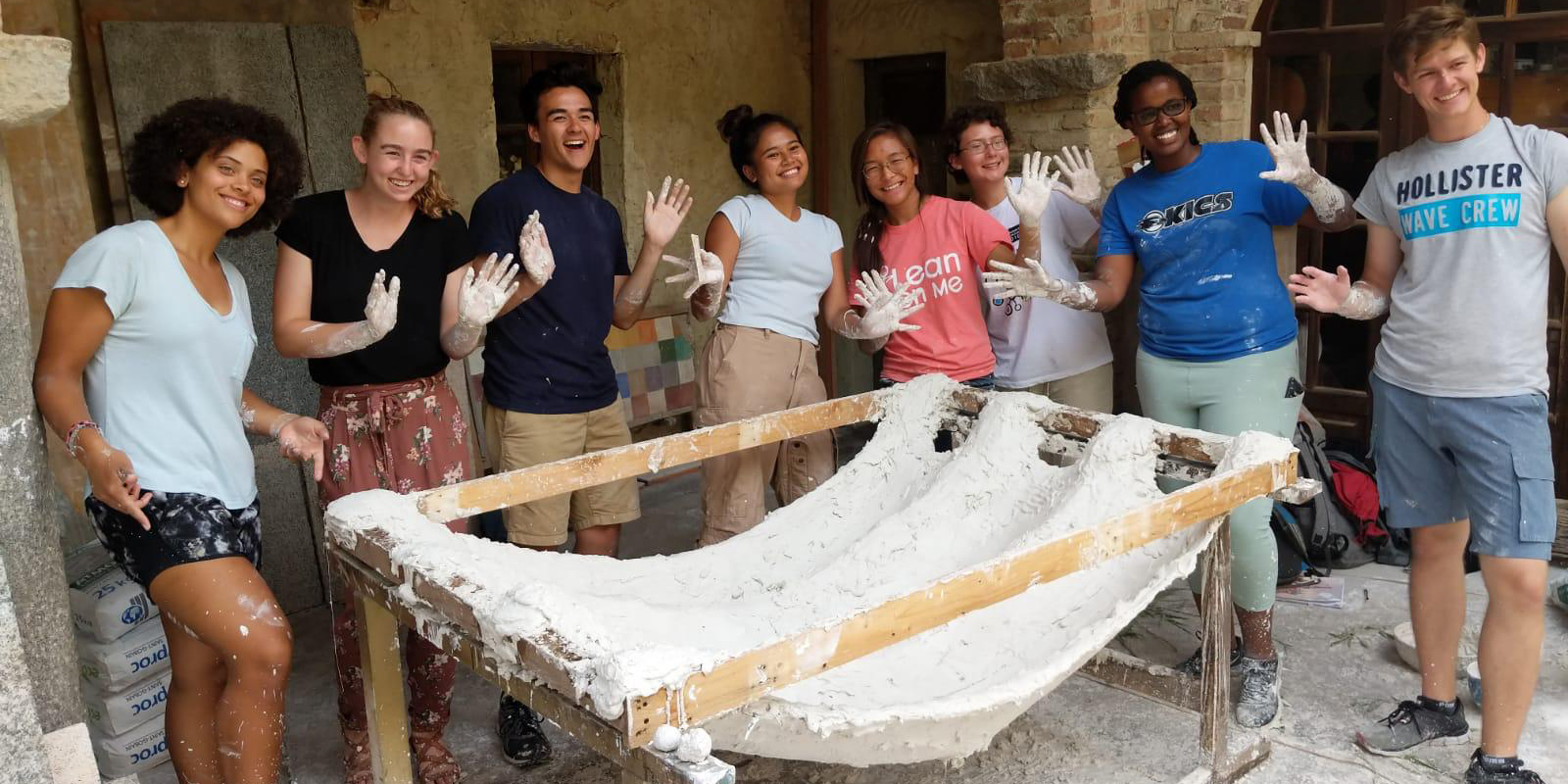
By Carene Umubyeyi ’22
Our last day of ONE-MA3 was spent applying what we learned in Professor Ochsendorf’s lecture at the American Academy in Rome by constructing our own gypsum shell structures using minimal reinforcement. We spent the first part of the morning with a lesson from Dario Parigi on load-bearing structures, with emphasis on the principle of Hooke’s hanging chain—the idea that the shape a hanging chain forms under a set of loads, when made rigid and flipped right side up shows the necessary arched structure needed to support the same set of loads—followed by a lesson from Marco Nicola on gypsum and its chemical properties.

Dario Parigi started off the day with a lesson about load-bearing structures
After the morning lessons we proceeded with small-scale experiments of different structural geometries we could create using mesh canvas and gypsum plaster, while still maximizing compressive strength by applying Hooke’s principle. Groups got extra creative with their structures, adding bamboo leaves and saw dust to gypsum mixtures for strengthening. One group even derived inspiration from the Pantheon by adding a miniature oculus in their structure! All this of course had to be done under 5 minutes before the gypsum started hardening and was no longer viscous enough to work with (as we sadly learned during our first attempt).
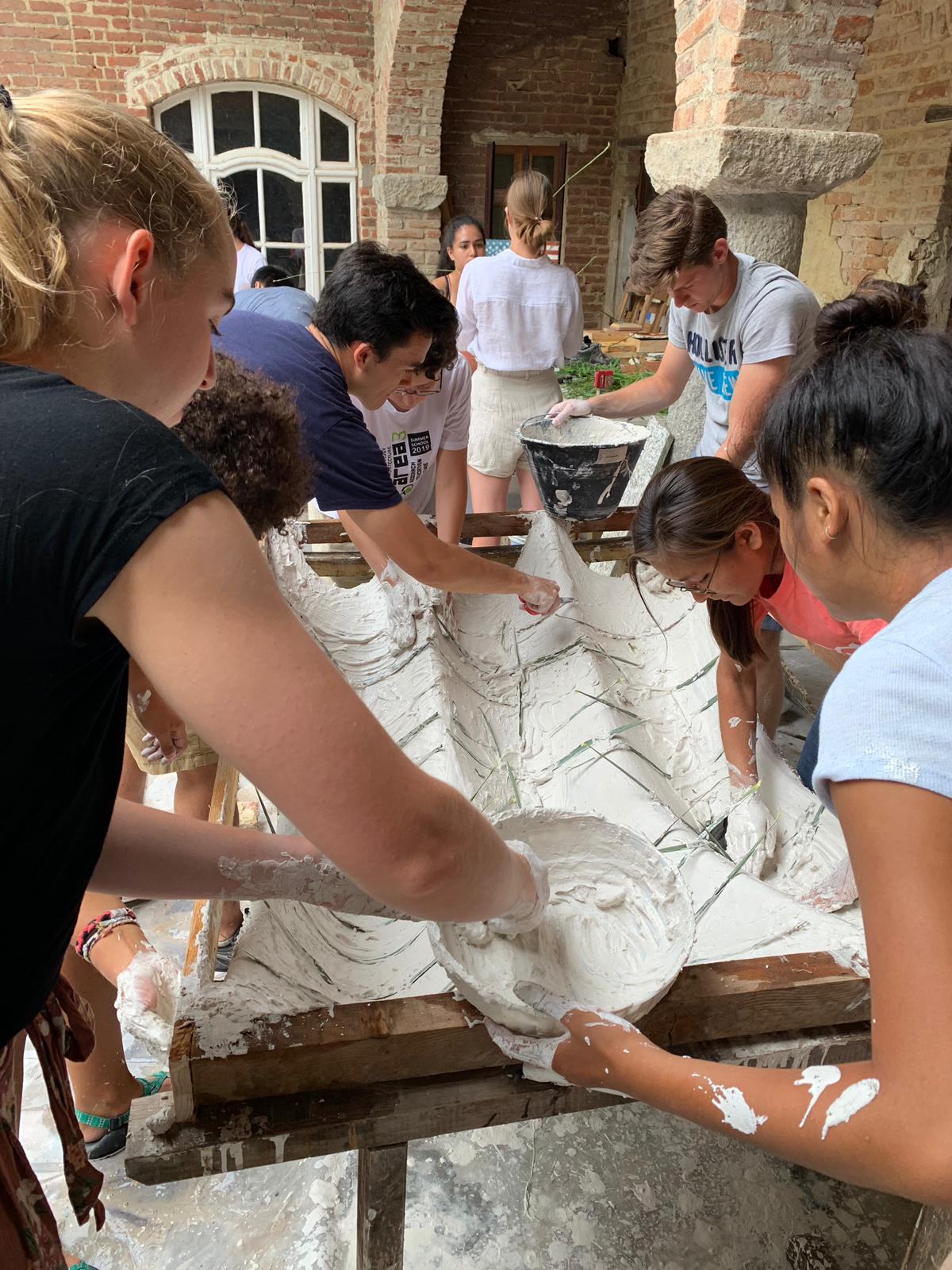
Some groups added bamboo sticks and leaves for additional reinforcement
After a short discussion about lessons learned from the morning experiments, the afternoon was spent building larger gypsum structures (using the same principles) capable of supporting the load of at least 1 Admir*. After more gypsum mixing, adding bamboo leaves/sticks, and a multitude of hands quickly smearing layer upon layer of gypsum on the mesh canvas, two magnificent structures were completed and given a few hours to harden before final testing would begin after dinner.
At around 10 PM, we returned and began preparing for testing. I placed my hand on our structure and was surprised to find it still wet. That’s odd, I thought. Is the other one dry? I walked over and gingerly placed my hand on it. The hardness of the shell confirmed it was.
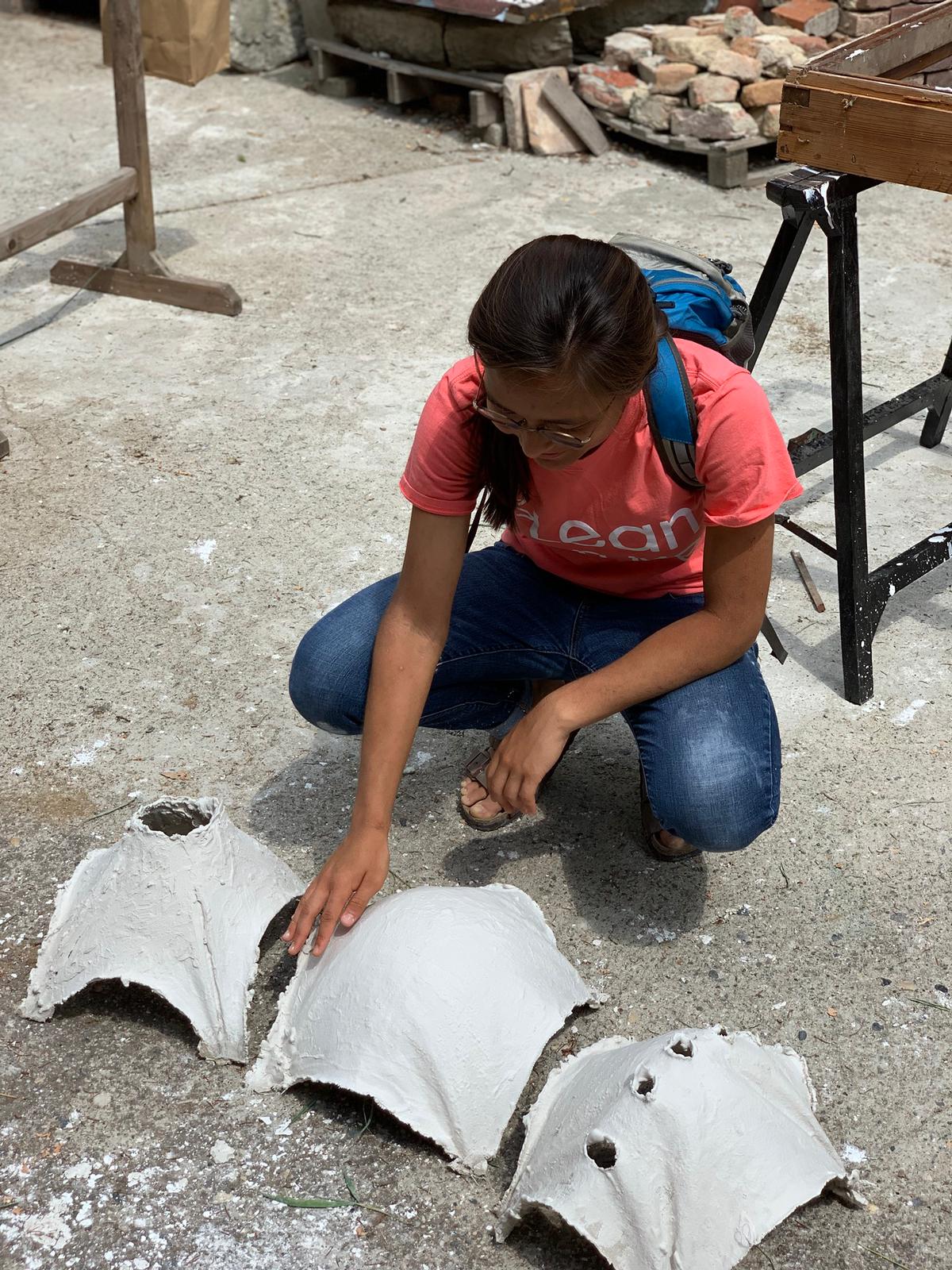
Sophia Fang ’22 examining her group’s structures

One of the final products
“It’s not dry”, I heard Dario conclude as he examined our structure, “the gypsum mixture must have contained too much water, interfering with the setting process”. I looked around and saw slow nods of realization. We decided to still test it and see. Placing ourselves all around the wooden frame, we began lifting the structure upwards to flip it over. Halfway up, we felt a sudden shift and the entire structure came loose from the frame and went crashing down. After a sad moment of silence, we regrouped and discussed what could have been done differently in our use of water in the gypsum mixtures.
The next group’s structure was carefully lifted and flipped over successfully. So far, so good. Excitement built as one person was able to stand on the structure, then two, then three, then four, then five, and so on until a full eight people stood on the structure, before it too, finally buckled and collapsed. Everyone cheered for the winning team as they hoisted their trophy and celebrated their gypsum structure. It had successfully held a load of eight people, far surpassing the minimum load of 1 Admir.
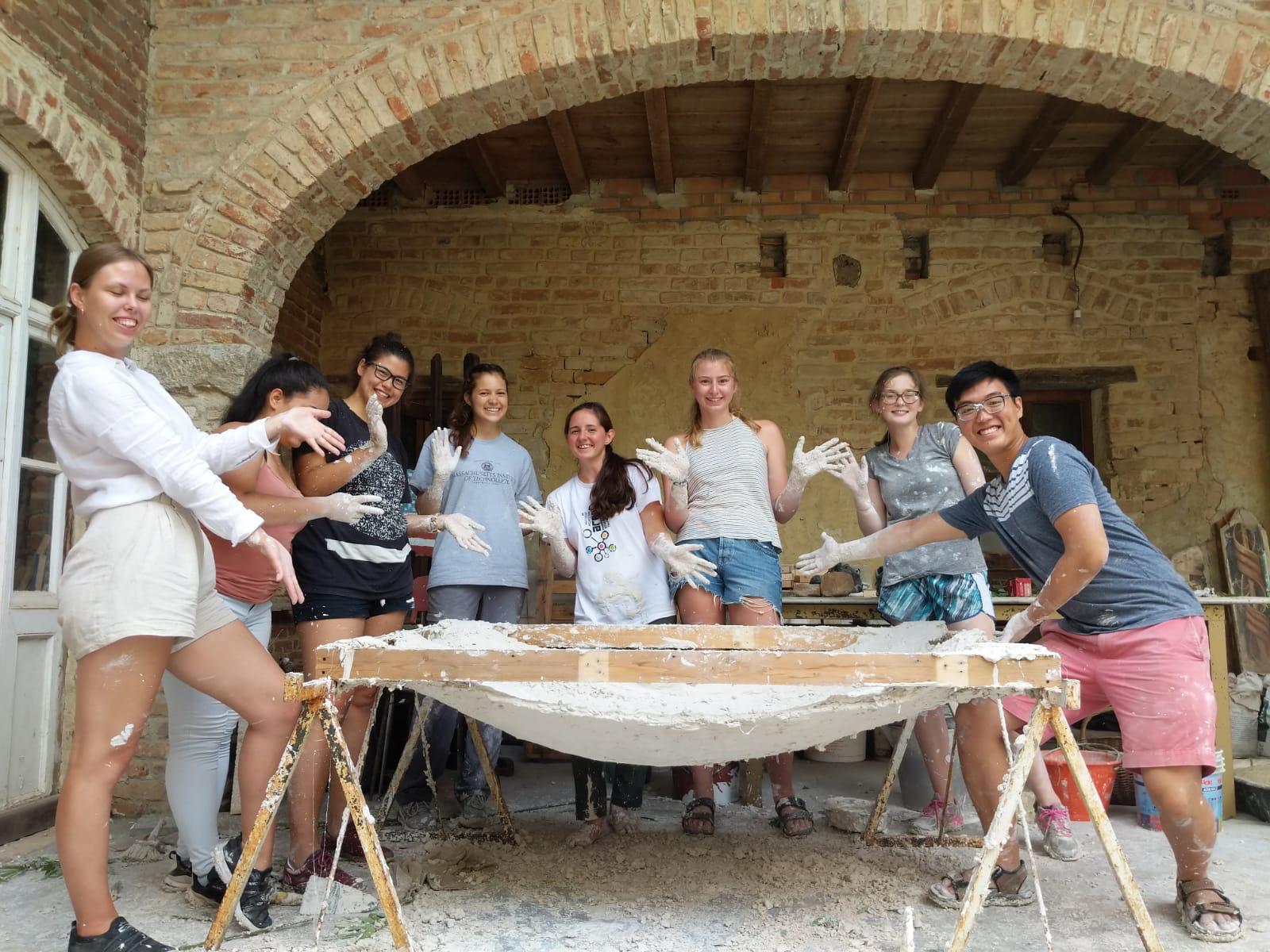
Another group’s final product
This activity was a great conclusion to ONE-MA3, combining different important aspects we had learned about into a fun-filled gypsum structure building competition that taught us the importance of teamwork and learning from our mistakes.
* 1 Admir – a unit of mass invented by ONE-MA3 students for this activity, equivalent to the weight of Professor Masic.

Pantheon-inspired gypsum structure


